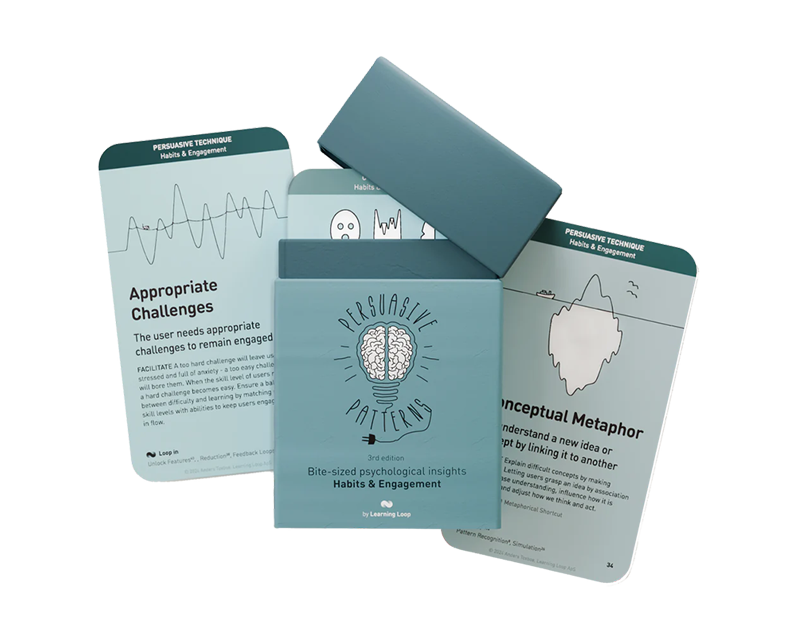Persuasive Patterns: Influence
Intentional Gaps
Create intentional gaps that users can't help but try to fill
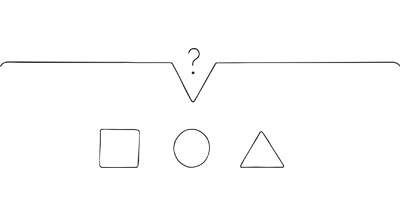
Creating Intentional Gaps is a persuasive technique that centers around creating deliberate omissions or ambiguities in information or experiences, prompting users to seek out the missing pieces. This engagement drives them to explore further, learn more, or participate actively to resolve these gaps.
Imagine a teacher organizing a scavenger hunt for a class of students. The teacher gives each student a map with several locations marked but leaves out the final destination, hinting that a surprise awaits the first to deduce its location. Each clue at the marked locations offers a piece of the puzzle, with the final clue requiring students to combine all previous information to discover the missing endpoint. This setup compels students to engage deeply with each clue and discuss theories with their peers, driven by the urge to fill in the missing information and reach the conclusion.
Now, consider a mobile gaming app that uses a similar tactic. The game presents players with a mystery that includes several levels, each ending with a cliffhanger that hints at the next stage. However, details about the ultimate goal or final level are deliberately omitted, creating a narrative gap. Players are compelled to progress through each level, driven by the desire to piece together the story and uncover the final mystery.
Like the students in the scavenger hunt who are motivated to find the hidden final destination, players of the game are driven to continue playing by their curiosity and the incomplete narrative. Each level they complete provides just enough information to keep them intrigued but always leaves one question unanswered, ensuring continued engagement.
The study
One of the seminal studies that significantly influenced our understanding of how incomplete tasks can captivate attention is by Bluma Zeigarnik. In the 1920s, Zeigarnik observed that waiters had better recollections of unpaid orders than those that had been paid and closed. This observation led to experiments which confirmed that people remember uncompleted or interrupted tasks better than those they complete. Zeigarnik’s findings laid the foundation for what is now known as the Zeigarnik Effect, a principle that explains why creating intentional gaps in information or tasks can significantly enhance user engagement. By leaving tasks incomplete, individuals are psychologically driven to return and achieve closure.
Zeigarnik, B. (1927). Über das Behalten von erledigten und unerledigten Handlungen. Psychologische Forschung, 9(1), 1-85.
The concept of leveraging curiosity through intentional gaps traces its roots back to classical and modern rhetoric, where orators would often structure their speeches to create suspense and engage audiences. The formal exploration of using gaps as a psychological trigger began with the work of Bluma Zeigarnik in the 1920s, who first identified how incomplete tasks tend to linger in the mind more prominently than completed tasks (known as the Zeigarnik effect). George Loewenstein in the 1990s further developed this into the Information Gap Theory, which has been applied extensively in marketing, education, and user experience design to harness the motivational power of curiosity.
The Intentional Gaps pattern leverages human curiosity and the desire for completeness to enhance user engagement and interaction. By strategically leaving out certain details or ending narratives with cliffhangers, designers can motivate users to continue interacting with a product or service. This technique is particularly effective in digital environments where user actions, such as clicks and views, are pivotal. The primary goal is to foster an active and engaging user experience that encourages deeper exploration and sustained interaction.
The Information Gap Theory is rooted in the broader concept of curiosity, which drives human learning and exploration. When an intentional gap is created, it activates this innate curiosity, prompting users to engage further with the content to resolve their uncertainty. This principle is leveraged in various contexts, from education, where it aids in enhancing learning outcomes by encouraging students to discover answers themselves, to marketing and digital product design, where it helps in maintaining user engagement and prompting actions that complete the narrative or information set presented.
Designing products using Intentional Gaps
This technique taps into the natural human curiosity and drives engagement by compelling users to seek out missing information or complete tasks.
Map out and identify key information or features that could benefit from a staggered reveal. For instance, in a learning application, rather than presenting all content upfront, you could design modules that gradually uncover deeper layers of information as users complete preliminary levels. Your aim is to not only sustain user interest but also enhance comprehension by allowing time for absorption and reflection between sessions.
Game designers might introduce narrative elements that are partially hidden and require user actions to unlock. This could involve completing certain levels or tasks to reveal pieces of the story. Such an approach ensures that players are continuously motivated to progress through the game to uncover the full narrative.
In e-commerce, designers might consider showing teaser previews of new products or upcoming sales events without giving away all the details. This strategy can increase anticipation and make users return to your site, eager to discover what’s new or on offer.
Be careful to maintain a balance between withholding and revealing information. The gaps should be significant enough to provoke curiosity but not so large as to cause frustration or confusion. Ensure that the information provided is sufficient to give users a clear direction on how to fill these gaps. This could be facilitated by subtle hints or incremental rewards that guide users towards the solution.
Observing how users interact with the intentional gaps you have created can provide valuable insights into whether they are effectively motivating engagement or merely causing irritation. Putting effort into product discovery and validation (testing) will enable you to adjust based on user behavior and feedback can help in fine-tuning the balance to better meet user expectations and enhance their overall experience.
Enhance the effect of your Intentional Gaps by visually representing progress or the proximity to completing the gap. For instance, visuals such as progress bars or checklists can help users visualize what they have achieved and what remains, thereby encouraging them to continue their efforts to close the gap completely.
Ethical recommendations
While powerful, if misused, this pattern can lead to unethical outcomes. For instance, it can be used to manipulate users into engaging in behaviors that benefit a platform or service at the expense of the user’s time, money, or privacy.
In scenarios where the gaps are linked to compulsive actions, such as repeated in-app purchases or endless content loops, users might find themselves expending resources without full awareness of their actions. Additionally, if the information withheld pertains to something critical like hidden costs or data privacy implications, the pattern becomes a tool for deception, potentially leading to loss of trust and harm to the user.
To ensure that the use of Intentional Gaps remains ethical and user-centric, it is important to adhere to a set of best practices:
- Transparency
Always be transparent about the fundamental aspects of your product or service. If using Intentional Gaps, ensure that users are aware of what actions they are being nudged towards and why. Transparency builds trust and helps users make informed decisions. - Provide value
Make certain that the resolution of these gaps provides genuine value to users. The pursuit of closing these gaps should lead to meaningful outcomes that enhance user satisfaction and justify their investment of time or other resources. - Respect user autonomy
Avoid designing experiences that trap users into endless loops of engagement that serve no purpose other than to benefit the service provider. Respect user autonomy by offering clear and rewarding conclusions to the activities initiated by Intentional Gaps. - Monitor impact
Regularly assess how users are interacting with the designed gaps and the impacts these have on their overall experience. Be prepared to make changes if the pattern leads to unintended negative consequences.
Real life Intentional Gaps examples
The professional networking site displays partial profile views to non-premium members, creating a curiosity gap that often leads to upgrading to premium services for full access.
Duolingo
This language learning app uses intentional gaps in its lesson structure. Users are given incomplete information about language rules and are encouraged to guess words in sentences, thus learning by doing and discovering patterns themselves.
BuzzFeed Quizzes
Often, BuzzFeed leaves results at the end of quizzes partially obscured or delayed, compelling users to complete more actions or share the quiz before revealing answers.
Trigger Questions
- Are the gaps we create directly tied to our core value proposition?
- Do we provide enough information to maintain user interest without overwhelming them?
- How can we ensure the resolution of these gaps is satisfying and rewarding for the user?
- What feedback mechanisms do we have in place to gauge user reactions to these gaps?
- How do we balance curiosity with user frustration?
- Are there opportunities to simplify or refine the way we implement these gaps?
Pairings
Intentional Gaps + Curiosity Effect
By creating a gap, and then using hints or partial reveals, you can heighten curiosity and encourage users to seek out the missing information actively.

Create intentional gaps that users can't help but try to fill

We crave more when teased with a small bit of interesting information
Intentional Gaps + Feedback Loops
Implementing feedback loops alongside Intentional Gaps can increase user motivation. As users progress towards closing the gap, providing feedback on their achievements can reinforce their actions and encourage continued effort.

Create intentional gaps that users can't help but try to fill
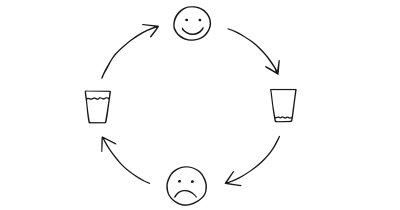
We are influenced by information that provides clarity on our actions
Intentional Gaps + Zeigarnik Effect
Utilizing the Zeigarnik Effect, where people remember uncompleted tasks better than completed ones, can make Intentional Gaps more compelling. Tapping into this effect ensures that tasks associated with these gaps remain top of mind for users, driving them to return and complete the interaction.

Create intentional gaps that users can't help but try to fill
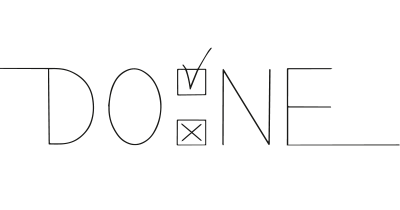
We remember uncompleted or interrupted tasks better than completed ones
Intentional Gaps + Storytelling
Integrating storytelling with Intentional Gaps can create a narrative that users want to follow. By leaving parts of the story untold or mysteries unresolved until later in the user journey, you can keep users engaged over longer periods.

Create intentional gaps that users can't help but try to fill

We engage, understand, and remember narratives better than facts alone
Intentional Gaps + Limited Choice
Combining Limited Choice with Intentional Gaps can streamline user decisions while maintaining engagement. By limiting the number of options available at each step of the gap-filling process, you can guide users through a controlled experience, reducing decision fatigue and focusing their efforts on the tasks that help them complete the story or solve the puzzle. This combination is particularly effective in environments where too many choices might overwhelm the user, such as in complex software interfaces or extensive product catalogs.

Create intentional gaps that users can't help but try to fill
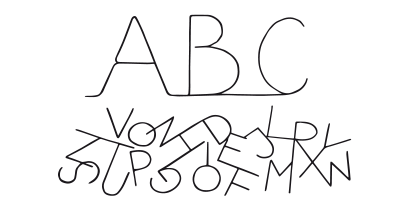
We are more likely to make a decision with fewer options to choose from
Intentional Gaps + Temptation Bundling
Temptation bundling involves pairing a desired activity with a less desirable one to increase engagement with the latter. When used with Intentional Gaps, this can mean linking the resolution of the gap with a reward or a particularly enjoyable activity. For example, a fitness app could unlock fun, engaging content only after a user completes a series of more challenging or less appealing workouts, thus using the user’s desire to engage with the content to motivate them through the tough parts of their exercise regimen.

Create intentional gaps that users can't help but try to fill
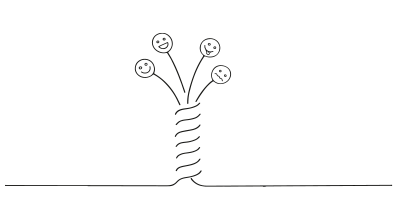
Engaging in hard tasks is more likely when coupled with something tempting
Intentional Gaps + Endowed Progress Effect
When users are given artificial advancement towards a goal it will increase their motivation to complete it. By integrating this with Intentional Gaps, you can provide users with a sense of progress towards solving a gap, even before they’ve started. For instance, if a user needs to complete several tasks to resolve a gap, showing them that they have already progressed somewhat towards this goal from the outset can motivate continued effort. This is especially useful in applications like educational courses or long-term projects, where initial progress indicators can encourage persistence.

Create intentional gaps that users can't help but try to fill

Early help speeds up goal achievement
A brainstorming tool packed with tactics from psychology that will help you build lasting habits, facilitate behavioral commitment, build lasting habits, and understand the human mind. It is presented in a manner easily referenced and used as a brainstorming tool.
Get your deck!- Uber das Behalten von erledigten und unerledigten Handlungen by Zeigarnik
- Zeigarnik, B. (1927). Über das Behalten von erledigten und unerledigten Handlungen. Psychologische Forschung, 9(1), 1-85.
- Loewenstein, G. (1994). The psychology of curiosity: A review and reinterpretation. Psychological Bulletin, 116(1), 75-98.
- Kidd, C., & Hayden, B. Y. (2015). The psychology and neuroscience of curiosity. Neuron, 88(3), 449-460.
- Berlyne, D. E. (1960). Conflict, arousal, and curiosity. McGraw-Hill Book Company.
- Litman, J. A., & Jimerson, T. L. (2004). The measurement of curiosity as a feeling of deprivation. Journal of Personality Assessment, 82(2), 147-157.
- Kang, M. J., Hsu, M., Krajbich, I. M., Loewenstein, G., McClure, S. M., Wang, J. T., & Camerer, C. F. (2009). The wick in the candle of learning: Epistemic curiosity activates reward circuitry and enhances memory. Psychological Science, 20(8), 963-973.
- Silvia, P. J. (2005). What is interesting? Exploring the appraisal structure of interest. Emotion, 5(1), 89-102.
- Minsky, M. (1975). A framework for representing knowledge. In P. H. Winston (Ed.), The psychology of computer vision (pp. 211-277). McGraw-Hill.
